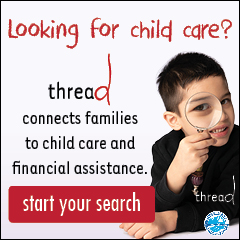
Is HOCKEY the right sport for your child?
Thinking of becoming a hockey parent? Alaska’s hockey experts and parents weigh in on the pros and cons of hitting the rink with your child.
By Jamey Bradbury
Looking for a fast-paced sport that will get your family off the couch and onto the ice? Lace up and give hockey a try! No matter what your child’s ability or interest, she can hit the rink today and discover why hockey ranks among the most popular sports in Alaska.
But it’s also one of the more expensive, and it comes with a certain amount of risk. To get the scoop on hockey pros and cons, we talked to area experts about the concerns parents have about letting their kids take to the ice.
get a head start
If your biggest worry about hockey is the risk of injury, you may actually want to sign your preschooler up today instead of waiting until he’s 8 or 9, advises Mandy Reale, hockey director with the Scotty Gomez Foundation.
“The little ones learn not to have a fear of falling pretty quickly,” she explains. Through drills that teach them how to fall safely and how to stay in control, players as young as four learn that falling doesn’t hurt when you’re covered in protective gear.
Meanwhile, they’re developing skills that reach beyond the rink. “For a lot of these kids, it’s their first experience with socialization and being part of a group,” Reale points out. “And hockey’s a loud, fast sport, so as they grow, it’s a great opportunity for players to learn how to control their emotions in an intense situation.”
safety: check it out
The same kids who learn how to fall also eventually learn how to check – and that’s where hockey gets a bad rap, says Darryl Thompson, president of the Alaska State Hockey Association (ASHA). “It’s a physical sport, but not a violent one. There’s very little fighting in youth hockey, partly because there’s no body contact allowed until Bantams,” he says, referring to the boys’ hockey level for ages 13 and 14.
Meanwhile, girls’ hockey restricts checking altogether. “Girls’ hockey is a finesse game,” describes Donna Kaufman, director of the Pacific District of USA Hockey. “While boys use their might, girls tend to develop the fine motor skills that make them more adept at shooting, passing and skating.”
When a Mayo Clinic study revealed that 13- and 14-year-olds may be less prone to injury because of their physical maturity and brain development, USA Hockey, the national governing body for the sport, banned checking in the 11- and 12-year-old boys’ divisions. This step, says Thompson, is representative of how seriously hockey associations take the threat of injury to their young players.
ASHA also implemented a concussion awareness program that educates coaches and emphasizes skills development. “My motto is ‘hockey for life,’” Thompson says. “We want these kids to be healthy so they can play the sport well into adulthood.”
The safeguards are working, according to Reale. “We have more missed hockey practices from a kid hurting her arm on the playground or in soccer than something that actually happens on the ice.”
cutting costs
Thompson credits USA Hockey with not only making hockey a safer game, but one that’s less expensive.
“That’s the number one hindrance to the sport: cost,” admits Brian Gross, head of the Anchorage Hockey Association (AHA). Sticks, skates, helmets, pads – the equipment adds up, especially when your young skater seems to outgrow her gear every year.
But savvy parents can save by purchasing most of their kids’ gear used at stores like Play It Again Sports. USA Hockey has also developed gear kits that hockey associations can loan for a nominal fee, especially to newer or low-income players. The organization has also developed station-based practices coaches can use to get more kids on the ice at once, reducing the cost of ice time.
“The other thing people don’t realize is hockey has a long season,” Gross adds. “You might spend $1000 for six months of hockey, whereas if you spend $250 on soccer, maybe you only play for two months.”
Thompson also points out that the more involved a child becomes in hockey, the greater the expense – but not every kid has to be an upper-tier athlete who travels out of state to compete. Every level of youth hockey is divided into tiers, with lower tiers providing a more recreational –and less costly – experience.
‘united by hockey’
As a lifelong hockey fan, Gross recalls the sport being a family affair. “You can’t send your kid to hockey practice on his bike, loaded down with his gear, in the winter. It becomes a family commitment, which some families can’t do. But a lot of families become very close-knit, united by hockey.”
Kaufman, who’s also a hockey mom, says the sport isn’t just great for families; it is a family. “You can take your skates anywhere in this country and walk into drop-in hockey, and it’s like walking into home. Alaska, particularly, is a hockey state, where the families really support each other.”
Thompson, whose eight children all played the sport at varying levels, says his kids have gained skills and memories that have lasted them a lifetime. “Plus there’s the things you gain from being on a team – structure, a common purpose, camaraderie, lasting friendships.”

try hockey for free
Still unsure whether the time and expense are worth the fun? You can Try Hockey for Free, a program offered in Anchorage by AHA, and also at rinks in Eagle River and Fairbanks. (For information, visit www.tryhockeyforfree.com.)
“We have certified coaches there to show the kids how to skate, lead them through games,” says Gross. “These Try Hockey for Free events let a kid get out there, have some fun and be part of a sport where the friendships are deep and the time spent together is priceless.”










